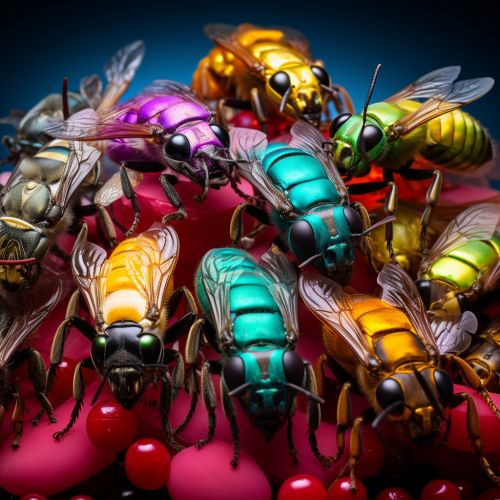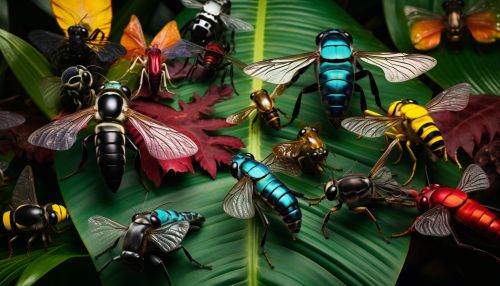Insect
Classification and Evolution
Insects, belonging to the class Insecta, are the most diverse group of organisms on Earth. They are a subgroup of arthropods, characterized by a chitinous exoskeleton, a three-part body (head, thorax, and abdomen), three pairs of jointed legs, compound eyes, and a pair of antennae. The evolution of insects dates back to the Devonian Period, approximately 385 million years ago.


Anatomy and Morphology
Insect anatomy is highly specialized and adapted for their environments. The body is divided into three main parts: the head, the thorax, and the abdomen. The head houses the insect's primary sensory organs and its mouthparts. The thorax, which is typically composed of three segments, bears the wings and six legs. The abdomen, the largest part of the insect, contains the digestive and reproductive organs.
Life Cycle
Insects undergo a process known as metamorphosis during their life cycle. This process can be complete (holometabolous), where the insect progresses from egg to larva, then to pupa, and finally to adult, or it can be incomplete (hemimetabolous), where the insect hatches from an egg into a nymph that gradually matures into an adult.
Behavior and Ecology
Insects play crucial roles in various ecological processes, including pollination, decomposition, and as a part of the food chain. Many insects are also known for their complex behaviors, such as social structure in ants, bees, and wasps, migration in butterflies, and bioluminescence in fireflies.
Insects and Humans
Insects have a profound impact on human societies. While some insects are beneficial, acting as pollinators or controlling pest populations, others are detrimental, causing damage to crops and structures, or spreading diseases.
Conservation
Insect conservation is a growing field of interest due to the critical roles insects play in ecosystems. However, many insect populations are declining due to habitat loss, pollution, and climate change.
